#andrew faulds
Text

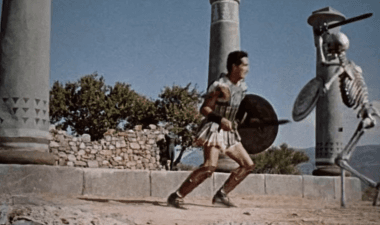
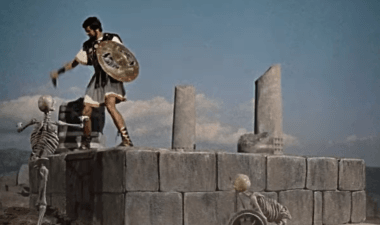

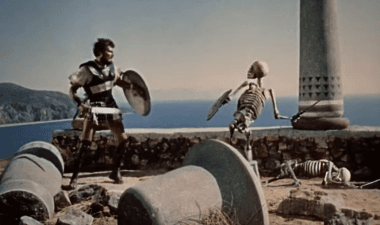
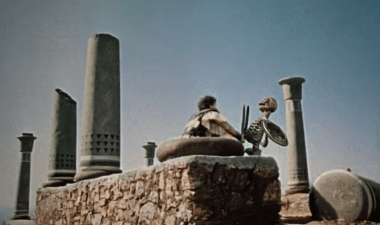

Jason and the Argonauts (1963)
#jason and the argonauts gif#ray harryhausen gif#stop motion animation#60s fantasy movies#skeleton warriors#special effects#todd armstrong#andrew faulds#ferdinando poggi#don chaffey#60s movies#sixties#1963#gif#chronoscaph gif
2K notes
·
View notes
Photo


Films Watched in 2023:
54. The Music Lovers (1971) - Dir. Ken Russell
#The Music Lovers#Ken Russell#Richard Chamberlain#Glenda Jackson#Max Adrian#Kenneth Colley#Christopher Gable#Izabella Telezynska#Maureen Pryor#Sabina Maybelle#Andrew Faulds#Bruce Robinson#Pyotr Ilych Tchaikovsky#Tchaikovsky#Films Watched in 2023#My Edits#My Post
12 notes
·
View notes
Text

Janet Munro-Andrew Faulds "The trollenberg terror" 1958, de Quentin Lawrence.
4 notes
·
View notes
Text
Jason and the Argonauts
Jason and the Argonauts
Jason and the Argonauts (1963) starring Todd Armstrong, Nancy Kovack
Synopsis
Jason and the Argonauts is the classic fantasy tale of the fearless sailor who must find the Golden Fleece before he can claim his throne. Fighting an army of skeletons, harpies, the hydra, and a bronze giant along the way.
(more…)

View On WordPress
#1963#Andrew Faulds#Douglas Wilmer#Jack Gwillim#Michael Gwynn#Nancy Kovack#Niall MacGinnis#Nigel Green#Patrick Troughton#Ray Harryhausen#Todd Armstrong
2 notes
·
View notes
Photo

Andrew Faulds, Ann Morrish, and Michael Atkinson in “The Protectors”
2 notes
·
View notes
Text
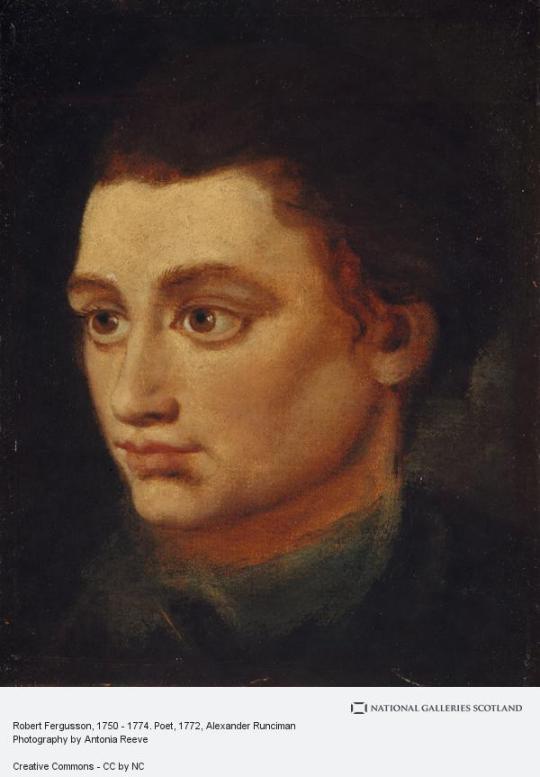

October 16th 1774 saw the death of Robert Fergusson, poet, in the Edinburgh Bedlam.
The Scottish poet who was one of the leading figures of the 18th-century revival of Scots vernacular writing and the chief forerunner of Robert Burns.
Fergusson was educated at the University of St. Andrews and became a copying clerk in a lawyer’s office in Edinburgh. In 1771 he began to contribute poems to Ruddiman’s Weekly Magazine. Although he was noted for the vivacity of temperament reflected in his verse, from 1773 his good spirits were encroached upon by fits of depression and religious guilt, and after suffering a severe head injury in a fall he became insane. He died in the Edinburgh asylum at the age of 24.
Fergusson’s poems were popular from their first appearance, and a collected volume came out in 1773. He wrote in both Scots and English, but the English verse has little value. His Scots poems—racy, realistic, wittily descriptive and humorous—had a stimulating effect on Burns, whose “Holy Fair” and “The Cotter’s Saturday Night” stem from Fergusson’s “Leith Races” and “The Farmer’s Ingle.” But vigorous poems like “The Daft Days,” “Address to the Tron Kirk Bell,” and the famous “Auld Reekie” prove how well Fergusson can stand as a poet in his own right.
Burns was a great admirer of Fergussons work and was appalled when visiting Edinburgh on finding no gravestone where the young poet was buried in Canongate kirkyard, he set about putting this to rights.
He paid for a simple headstone, although church records say they had to "remind" him to cough up with the money, he had it inscribed with…..
No sculptured marble here, nor pompous lay,
No storied urn, nor animated bust ;
This simple stone directs pale Scotia’s way,
To pour her sorrows o’er her poet’s dust.
Fergusson’s ‘Auld Reikie’ is a 300-line poem praising Edinburgh through observations of the daily life of ordinary people. Never patronising, Fergusson’s poem documents a day in the life of the city, embracing shopkeepers, porters, children, whores, dandies, debtors, servants, lawyers and schoolboys. For Burns Fergusson’s poetry served as a model of how the Scots dialect was ideally suited to the energy of the lives of ordinary people.
I think a 300 line poem is a bit much to inflict on you all so here is a wee excerpt
… Now morn, with bonny purpie-smiles,
Kisses the air-cock o’ St Giles;
Rakin their een, the servant lasses
Early begin their lies and clashes;
Ilk tells her friend o’ saddest distress,
That still she brooks frae scouling mistress;
And wi her joe in turnpike stair
She’d rather snuff the stinking air,
As be subjected to her tongue,
When justly censur’d in the wrong.
On stair wi tub, or pat in hand,
The barefoot housemaids loo to stand,
That antrin fock may ken how snell
Auld Reikie will at morning smell:
Then, with an inundation big as
The burn that ‘neath the Nore Loch Brig is,
They kindly shower Edina’s roses,
To quicken and regale our noses.
Now some for this, wi satire’s leesh,
Hae gien auld Edinburgh a creesh:
But without souring nocht is sweet;
The morning smells that hail our street
Prepare, and gently lead the way
To simmer canty, braw and gay;
Edina’s sons mair eithly share
Her spices and her dainties rare,
Than he that’s never yet been call’d
Aff frae his plaidie or his fauld.
Now stairhead critics, senseless fools,
Censure their aim, and pride their rules,
In Luckenbooths, wi glowring eye,
Their neighbour’s sma’est faults descry:
If ony loun should dander there,
Of aukward gate and foreign air,
They trace his steps, till they can tell
His pedigree as weel’s himsel …
6 notes
·
View notes
Text
THE CRAWLING EYE (THE TROLLENBERG TERROR, 1958) – Episode 129 – Decades Of Horror: The Classic Era
“Alan, we’re in big trouble. The cloud is splitting up!” The cloud is splitting? Run for your lives! Join this episode’s Grue-Crew – Whitney Collazo, Daphne Monary-Ernsdorff, and Jeff Mohr – as they make a trip to Trollenberg for an eyewitness account of the terror known as Tempean’s The Crawling Eye (1958), aka The Trollenberg Terror.
Decades of Horror: The Classic Era
Episode 129 – The Crawling Eye (1958)
Join the Crew on the Gruesome Magazine YouTube channel!
Subscribe today! And click the alert to get notified of new content!
https://youtube.com/gruesomemagazine
ANNOUNCEMENT
Decades of Horror The Classic Era is partnering with THE CLASSIC SCI-FI MOVIE CHANNEL, THE CLASSIC HORROR MOVIE CHANNEL, and WICKED HORROR TV CHANNEL
Which all now include video episodes of The Classic Era!
Available on Roku, AppleTV, Amazon FireTV, AndroidTV, Online Website.
Across All OTT platforms, as well as mobile, tablet, and desktop.
https://classicscifichannel.com/; https://classichorrorchannel.com/; https://wickedhorrortv.com/
A series of decapitations on a Swiss mountainside appear to be connected to a mysterious, radioactive cloud. The cloud turns out to be inhabited by horrible alien creatures who like to decapitate humans and are also in telepathic communication with certain people.
Director: Quentin Lawrence
Writers: Jimmy Sangster (screenplay); Peter Key (aka George Kerr, Jack Cross, & Giles Cooper) (story)
Produced by: Robert S. Baker, Monty Berman
Production Company: Tempean Films
Music by: Stanley Black
Cinematography by: Monty Berman (director of photography)
Selected Cast:
Forrest Tucker as Alan Brooks
Laurence Payne as Philip Truscott
Jennifer Jayne as Sarah Pilgrim
Janet Munro as Anne Pilgrim
Warren Mitchell as Professor Crevett
Frederick Schiller as Mayor Klein
Andrew Faulds as Brett
Stuart Saunders as Dewhurst
Colin Douglas as Hans
Derek Sydney as Wilde
Richard Golding as first villager
George Herbert as second villager
Anne Sharp as German woman
Leslie Heritage as Carl
Jeremy Longhurst as first student climber
Anthony Parker as second student climber
Theodore Wilhelm as Fritz
Garard Green as pilot
Caroline Claser as little girl
Jeff chose this one and he loves it! Even though the effects may be a bit cheesy, he stares agog at the title characters. Janet Munro, Forrest Tucker, the terribly but awesomely acted professor, and a well-paced script make The Crawling Eye a fun watch.
The Crawling Eye is a pleasant sight to behold for Daphne, who shows up for the podcast as Daph-eye-ne, complete with costume. She likes how it starts off with a bang, (actually a decapitation) and she loves the “leg-a-cles.” Whitney also describes the effects as wild and cheesy but then reminds Grue-believers how much she loves cheese. The Crawling Eye is a fun, crazy film, what with all the ocular shenanigans. Chad is reminded of a Quatermass film with a tinge of film-noir with some of its dark shots and characters knowingly walking into danger. He lauds the well-thought-out, Jimmy Sangster-penned script.
Your Classic Era Grue Crew unanimously labels The Crawling Eye a fun movie that includes its share of tension. At the time of this writing, the film can be streamed from the Classic Horror Movie Channel and the Classic Sci-Fi Movie Channel.
Jeff shows off his fresh copy of Little Shoppe of Horrors, issue 48, featuring Robert S. Baker, Monty Berman, and the films of Tempean. Of particular use to the Classic Era Grue Crew is “The Trollenberg Terror” by Clive Dawson. New and back issues of Little Shoppe of Horrors (The Journal of Classic British Horror Films), are available at https://www.littleshoppeofhorrors.com/
Gruesome Magazine’s Decades of Horror: The Classic Era records a new episode every two weeks. Up next in their very flexible schedule is one chosen by Daphne: Mario Bava’s Kill, Baby… Kill! (1966).
Please let them know how they’re doing! They want to hear from you – the coolest, grooviest fans: leave them a message or leave a comment on the site or email the Decades of Horror: The Classic Era podcast hosts at [email protected]
To each of you from each of us, “Thank you so much for listening!”
Check out this episode!
0 notes
Photo

Bad movie I have A Funny Thing Happened on the Way to the Forum 1966
#A Funny Thing Happened on the Way to the Forum#Melvin Frank Production#Zero Mostel#Phil Silvers#Buster Keaton#Michael Crawford#Jack Gilford#Annette Andre#Michael Hordern#Leon Greene#Roy Kinnear#Alfie Bass#John Bluthal#Pamela Brown#Patricia Jessel#Beatrix Lehmann#Frank Thornton#Peter Butterworth#John Bennett#Andrew Faulds#Jennifer Baker#Susan Baker#Ronnie Brody#Frank Elliott#Lucienne Bridou#Helen Funai#Bill Kerr#Jack May#Inga Neilsen#Jon Pertwee
12 notes
·
View notes
Text



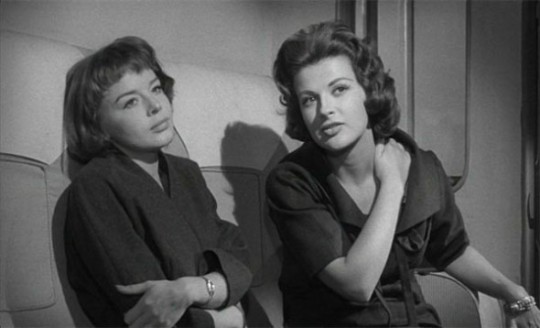
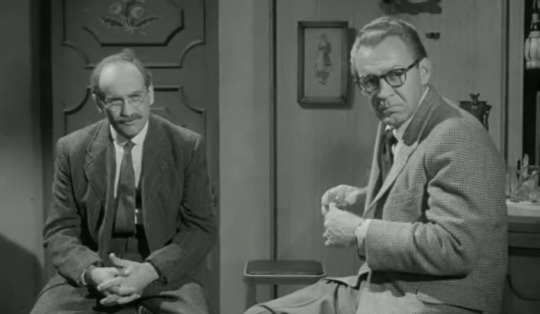





The Trollenberg Terror (The Crawling Eye, 1958)
"Cute little things, aren't they?"
"Yeah. I'm gonna throw a bomb at that one - you watch on the screen, see what happens."
#The Trollenberg Terror#The Crawling Eye#1958#films i done watched#british cinema#horror film#creature feature#jimmy sangster#Quentin Lawrence#forrest tucker#Laurence Payne#Jennifer Jayne#janet munro#warren mitchell#Frederick Schiller#Andrew Faulds#Stuart Saunders#Colin Douglas#Derek Sydney#So like quite a few mid 50s Sci fi and thriller films‚ this has its origins in a British TV serial. Like many of those others‚ that serial#Is now considered completely lost. That's a real shame because I really feel like a direct comparison here could be really interesting.#This film fudges quite a few moments and leaves some gaping plot holes as well as essentially dropping a major telepathy subplot about#Half way through; would the series version‚ with roughly double the running time‚ have ironed out these creases? Did the change of focus#From psychic battle to firebombing feel more fluid with a slower development? Ho hum. Otherwise‚ this is still a great deal of fun. It#Isn't as polished or as timeless as the similar serial adaptations Hammer was doing at the time (ie. Quatermass and The Abominable Snowman)#But it's eager and it's willing‚ even if the effects are pretty woeful in places. In particular‚ there's a miniature effect towards the#Conclusion which has to be one of the very worst of its type: but if anything this just adds to the endearingly naive feel of the whole#Thing. Adorable. Well‚ as adorable as a film with multiple beheadings can be...
14 notes
·
View notes
Text
Blood of the Vampire to get UK Bluray premiere from Nucleus Films
Blood of the Vampire to get UK Bluray premiere from Nucleus Films
Legendary actor Sir Donald Wolfit (Svengali, Room at the Top, Becket) joins British horror queen Barbara Shelley (Village of the Damned, Dracula Prince of Darkness, Quatermass and the Pit) in Blood of the Vampire, a lurid tale of ghastly experiments in a Transylvanian prison. Despite being staked as a vampire, the sadistic Dr Callistratus has become governor and is now using prisoners for the…

View On WordPress
#Andrew Faulds#Barbara Burke#Barbara Shelley#Bernard Bresslaw#Blood of the Vampire#Brian Coleman#Bruce Whiteman#Cameron Hall#Colin Tapley#Dennis Shaw#Donald Wolfit#George Murdell#Hal Osmond#Henry Cass#Henry Vidon#John Le Mesurier#John Stuart#Julian Strange#Max Beimmell#Milton Read#Muriel Ali#Nucleus Films#Otto Diamant#Richard Golding.#Sir Donald Wolfit#Theodore Wilhelm#Victor Maddern#Vincent Ball#William Devlin
0 notes
Photo
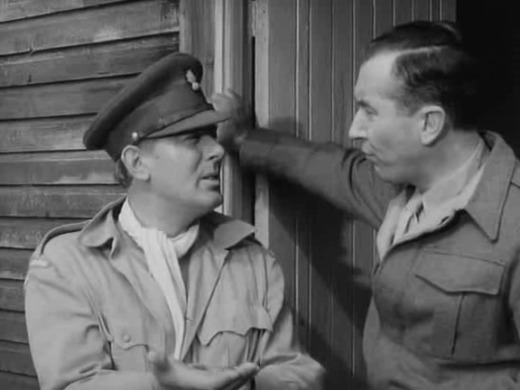
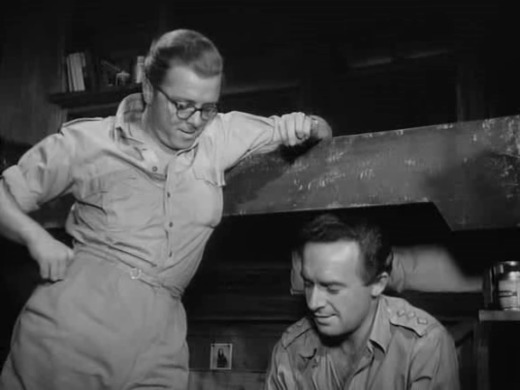



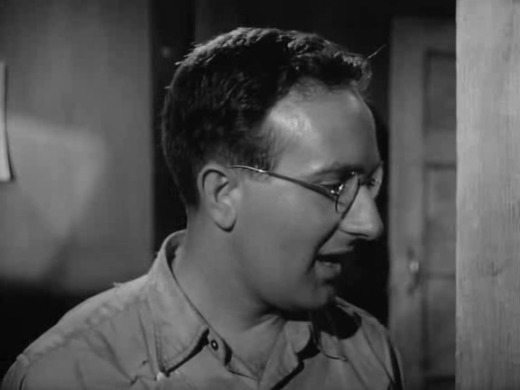
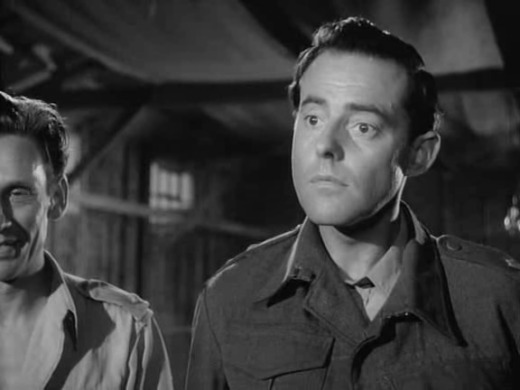
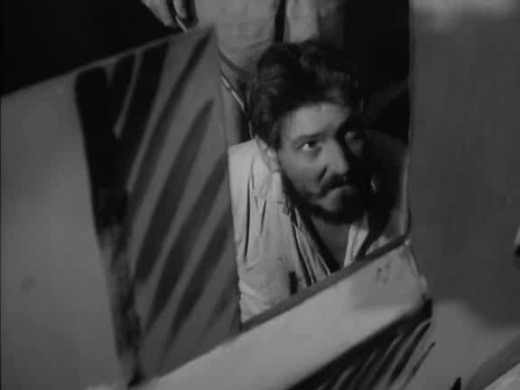
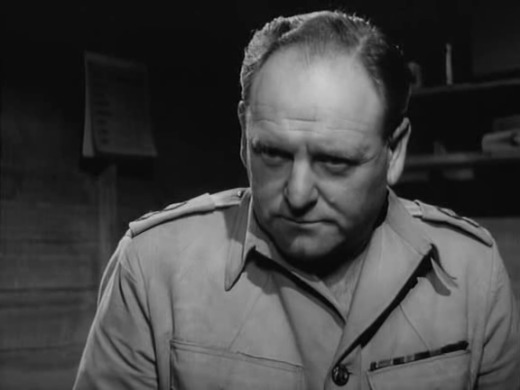
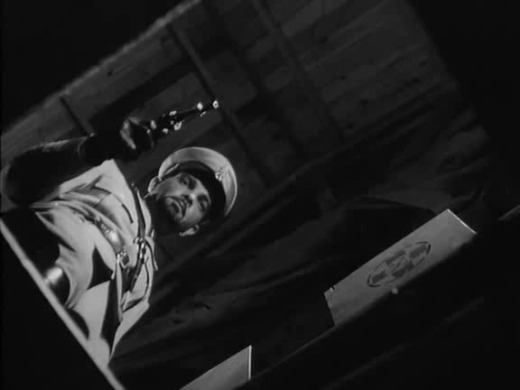
Danger Within (1959)
Danger Within, a wholly engrossing nailbiter with some pivotal performances from the denizens of a classic age of British cinema, is a movie that deserves to be far more widely known than it is.
#MW#michael wilding#Marquand#a matinee idol ?#much more ..#danger within#1959#breakout#richard attenborough#richard todd#peter arne#donald houston#bernard lee#dennis price#peter jones#ronnie stevens#andrew faulds#terence alexander#william franklyn#don chaffey#michael gilbert
0 notes
Text
The Crawling Eye
The Crawling Eye (1959) aka. The Trollenberg Terror, starring Forrest Tucker, Warren Mitchell, Janet Munro, Jennifer Jayne
The Crawling Eye – classic sci-fi horror starring Forest Tucker. Something is going on on the mountain. Hikers are getting decapitated! And …
(more…)

View On WordPress
#alien invasion#Andrew Faulds#Derek Sydney#Forrest Tucker#Janet Munro#Jennifer Jayne#Laurence Payne#Warren Mitchell
2 notes
·
View notes
Photo

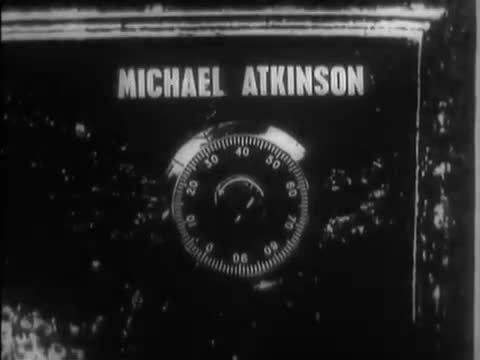
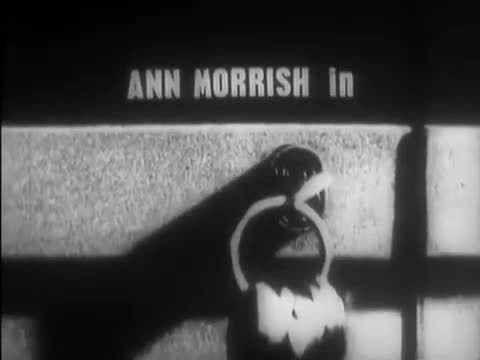

The Protectors - ABC/ITV - March 28, 1964 - June 27, 1964
Crime Drama (14 episodes)
Running Time: 60 minutes
Stars:
Andrew Faulds as Ian Souter
Michael Atkinson as Robert Shoesmith
Ann Morrish as Heather Keys
2 notes
·
View notes
Text
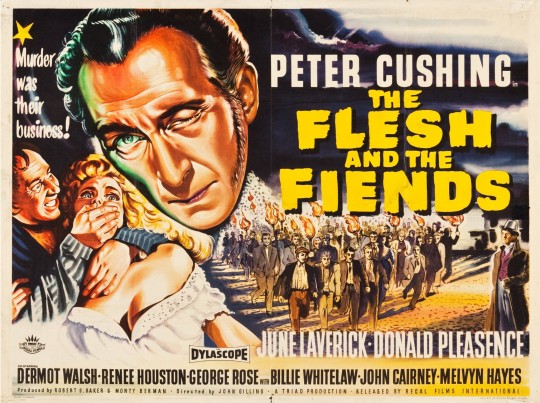



W A T C H I N G
#THE FLESH AND THE FIENDS (1960)#PETER CUSHING#DONALD PLEASENCE#GEORGE ROSE#BILLIE WHITELAW#DERMOT WALSH#John Gilling#June Laverick#Renee Houston#John Cairney#Melvyn Hayes#Andrew Faulds#George Woodbridge#Garard Green#Esma Cannon#Steven Berkoff#WATCHING#HORROR#TRUE STORY#BURKE & HARE#WILLIAM BURKE#WILLIAM HARE#MANIA (1961)#Psycho Killers (1961)#The Fiendish Ghouls#grave robbers#Dr. Robert Knox#British horror#thriller film#murderers
2 notes
·
View notes
Photo


"Dante's Inferno" de Ken Russell (1967) - sur la relation entre l'artiste Dante Gabriel Rossetti (1828–1882) et sa muse Elizabeth Siddal (1829–1862) - avec Oliver Reed, Judith Paris, Gala Mitchell, Andrew Faulds et Iza Teller, avril 2022.
#films#spirit#Russell#Rossetti#Siddal#Morris#Millais#Ruskin#Howell#BurneJones#Hunt#Reed#Paris#Mitchell#Faulds#Teller
11 notes
·
View notes
Photo
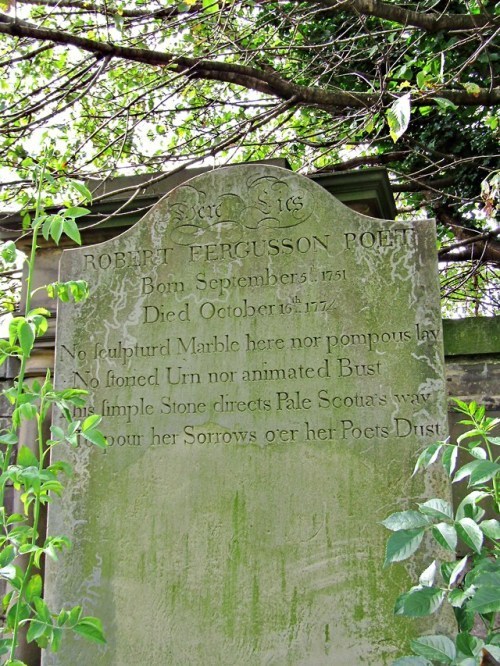


On September 5th 1750, the poet Robert Fergusson was born in the Canongate in Edinburgh.
Although still relatively unknown, Fergusson was one of the most influential writers of his time despite dying at the tender age of 24, I wonder how many of you have maybe posed at his statue outside Cangate Kirkyard, but paid little attention to who he was?
Fergusson was brought up initially in Edinburgh but then moved to Dundee where he attended high school before being matriculated to the St Andrews University in 1765.
After the death of his father and completing his studies, the responsibility for supporting his mother fell upon Fergusson and he moved back to Edinburgh, taking up a post as a copyist. This caused some friction with his uncle as Fergusson had essentially rejected the excepted professions of the time such as lawyer or going into the church as a priest.
There is plenty of reason to believe that the young Fergusson had started developing his poetic sensibilities whilst at St Andrews, including beginning work on a play about Scottish brave-heart William Wallace. Moving to Edinburgh allowed Fergusson to get to known the writers and other artistic talent in the city, and he mixed largely in bohemian circles, befriending William Woods who managed some of the theatres there.
At the time, he also became friends with opera singer Tenducci who was touring the country with his company. This was when Fergusson was asked to produce Scottish songs for the Edinburgh section of the tour and marked his first published work. Buoyed by his success he began to produce satirical and pastoral poems for the Weekly Review that was run by Walter Ruddiman.
His initial offerings were traditional poems but it wasn’t long before Fergusson began writing verses that were considered more ‘Scots’. In 1772 he published The Draft Days which drew a good deal of attention and from then on he would submit poems in both English and the Scots dialect. His popularity also grew and in 1773 a collection of his work was published by Ruddiman which sold well enough for Fergusson to earn some money from his artistic endeavours.
Fergusson wrote his most well-known work, Auld Reekie, about this time and was confident enough of success to arrange to publish it himself. It was intended to be part of a much longer poem and provides an engaging and masterful portrait of Edinburgh at the time.
Unfortunately, Fergusson also suffered from bouts of depression and, if any further work was done on the poem it was probably destroyed by him in one of his darker moments.
Fergusson became a member of the famous Cape Club that would regularly meet in a local hostelry in the city. Each member of the club had a name and characteristic attached to them and drawings from the time show Fergusson as ‘Mr Precentor’.
Towards the middle of 1773, despite his growing success and popularity, Fergusson’s work grew a little darker and included Poem to the Memory of John Cunningham where he wrote about his fears of suffering a similar fate and ending up in a mental institution or asylum.
At the end of 1774, Fergusson suffered from an injury to his head and, though details are sketchy, did indeed end up in the Edinburgh equivalent of Bedlam. Two weeks later he was dead, at the tender age of 24, and had been buried in an unmarked plot in the city cemetery.
Now that may have been the end to the story and our fine Edinburgh poet may well have disappeared into obscurity if it weren't for Robert Burns arrived in Edinburgh in 1786, he made a pilgrimage to the Canongate kirkyard to pay his respects to the young man who had inspired his poetry and whose grave lay unmarked for 12 years since his death at the age of 24 in October 1774.
Had Robert Fergusson lived and written more than one slim volume of poems, Scotland might now have two national bards and celebrate Fergusson Night with a feast of his favourite seafood on September 5th, the date of the neglected poet's birth in 1750.
Burns himself acknowledged it long ago, when he paid for the headstone that now marks Fergusson's grave and composed a heartfelt inscription:
No sculptur'd marble here, nor pompus lay,
No story'd urn nor animated bust;
This simple stone directs pale Scotia's way
To pour her sorrows o'er her poet's dust.
The pics are from one of my many visits to Canongate, I always try and pop in and pay my respects to the man.
From Auld Reekie.....
… Now morn, with bonny purpie-smiles,
Kisses the air-cock o’ St Giles;
Rakin their een, the servant lasses
Early begin their lies and clashes;
Ilk tells her friend o’ saddest distress,
That still she brooks frae scouling mistress;
And wi her joe in turnpike stair
She’d rather snuff the stinking air,
As be subjected to her tongue,
When justly censur’d in the wrong.
On stair wi tub, or pat in hand,
The barefoot housemaids loo to stand,
That antrin fock may ken how snell
Auld Reikie will at morning smell:
Then, with an inundation big as
The burn that ‘neath the Nore Loch Brig is,
They kindly shower Edina’s roses,
To quicken and regale our noses.
Now some for this, wi satire’s leesh,
Hae gien auld Edinburgh a creesh:
But without souring nocht is sweet;
The morning smells that hail our street
Prepare, and gently lead the way
To simmer canty, braw and gay;
Edina’s sons mair eithly share
Her spices and her dainties rare,
Than he that’s never yet been call’d
Aff frae his plaidie or his fauld.
Now stairhead critics, senseless fools,
Censure their aim, and pride their rules,
In Luckenbooths, wi glowring eye,
Their neighbour’s sma’est faults descry:
If ony loun should dander there,
Of aukward gate and foreign air,
They trace his steps, till they can tell
His pedigree as weel’s himsel …
66 notes
·
View notes